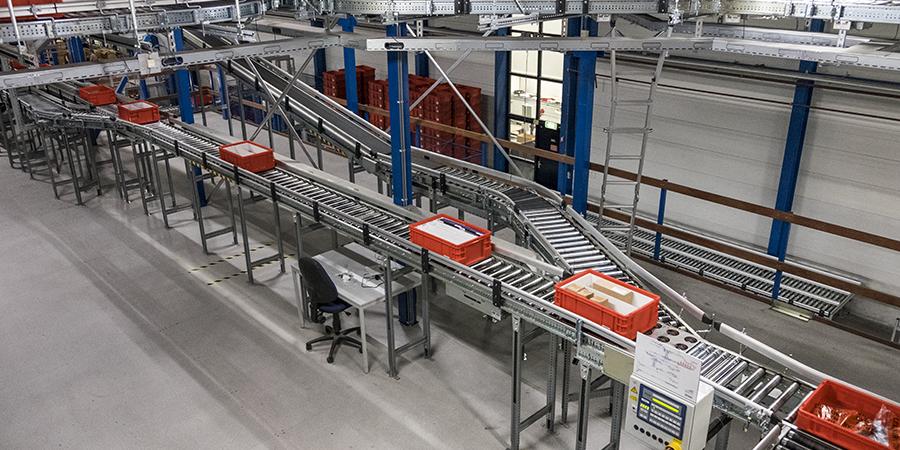Global eCommerce platform Kooomo provides advice for retailers on how to create an omnichannel business
Executing an omnichannel strategy has been a priority for many retailers for some years now, but the rapid increase in online shopping and changing spending habits caused by the COVID-19 pandemic have sped up this adoption further. However, according to Global eCommerce platform, Kooomo, many retailers still fail to fully understand the meaning of an ‘omnichannel presence’ and how it differs from multichannel and are therefore missing out on optimising their operations.
Ciaran Bollard, CEO of Kooomo says, “In multichannel marketing, the brand is at the centre of the strategy, with one static message that’s communicated to each channel. By contrast, in omnichannel marketing, the customer is at the centre of the strategy with each channel adapting around the customer’s behaviour. Omnichannel allows for the synchronisation of all inventory and sales channels, creating a customer experience (CX) that flows from online to in-store and vice versa. It also means having a fully integrated supply chain to maximise stock value.”
Ciaran outlines that retailers considering a move to an omnichannel solution should focus on three primary aspects: synchronised data/stock, diversified sales channels and the user experience.
- Synchronising data and stock
When looking for an omnichannel solution, consider an outlet that can easily synchronise inventory across all online and bricks and mortar stores to dramatically reduce the risk of ever running out of stock. This means you can order inventory in a more accurate fashion (reducing wasted costs) and better communicate to your customers if items are low or out of stock.
Collecting and synchronising data will also play a major role in successful omnipresence, as this will improve the flow of the customer journey and improve the CX. Customers should be able to fill a basket at their convenience, continue shopping across different sessions (and different devices), and have the option for delivery, collect in-store or to order from in-store for delivery.
- Diversifying sales channels
Omnichannel shoppers have a 30%[1] higher lifetime value than single-channel shoppers so you should give customers the option to buy across all channels. Offer multi-channel options including click and collect, purchase from mobile/mobile apps, purchase from marketplaces, purchase from social media – as many channels as possible. Consumers love nothing more than having choices, so if you have a bricks and mortar presence as well as an online store for your brand you have already tapped into this desire for options than implementing omnichannel into your online strategy.
Omnichannel shoppers spend 15% more per purchase[2] than those who shop on one channel and are much more likely to return, so why not spoil your consumer for choice?
- The User Experience (UX)
Unification and flow are crucial for a positive UX, but there is also personalisation, customer assistance and transparent information to consider. Successful personalisation is constructed using the data you have collected to create a unique experience for the customer which they now expect as standard. After all, consumers are more likely to engage with an offer if it has been personalised to reflect previous interactions they’ve had with that brand. This means you need to build suggested pages and personalised correspondence around your consumers’ unique profiles.
Good customer assistance can help ensure that the customer journey reaches its endpoint with minimal disruption or frustration. Consumers expect a business to be available 24/7 so it goes without saying that retailers have moved beyond the realms of 9-5. Therefore, it’s imperative to bridge any current gaps between you and your on-demand consumers.
Transparent information, now more than ever, is essential for good UX. It’s important that the messaging on your website accurately reflects your service, especially in times of crisis or delays. Customers are willing to have a longer delivery window now that physical shopping is off the table, so make sure all communications are transparent and as accurate as possible to reinforce a positive CX.
It is very important to keep communications with customers timely and update them as the situation changes. This includes clearly confirming your delivery and express delivery timings on your online store which is crucial to avoid disappointment and bad reviews. This will also help to alleviate fears and build trust during times of uncertainty or supply chain disruption.
Ciaran concludes, “Of course, creating a great omnipresence does not pertain only to these three elements as there is much to consider before creating an effective digital presence. However, taking the initial steps to ensure synchronisation of data/stock, diversified sales channels and a satisfying user experience are the stepping stones that will set you on the right course for success.”







